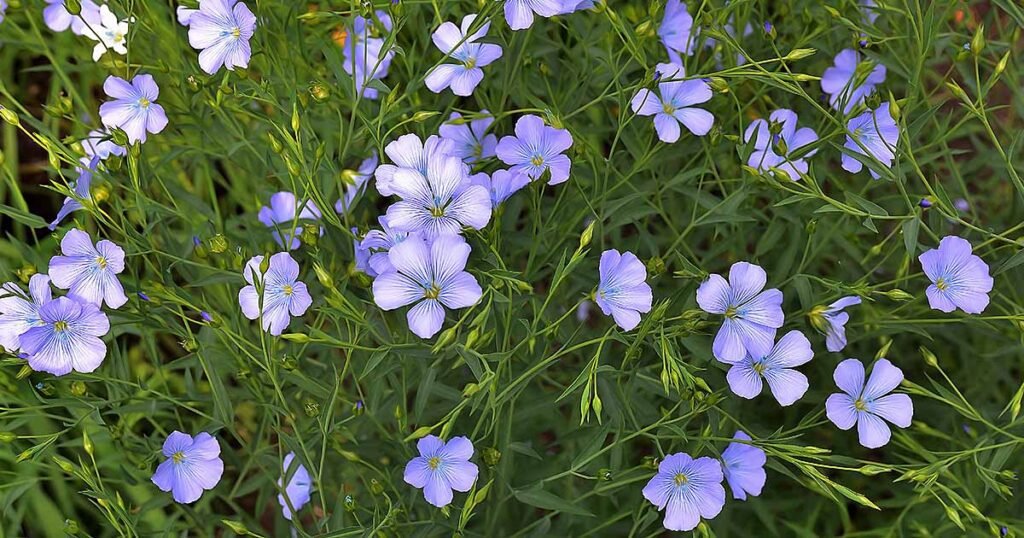Linseed or Tisi is a plant of temperate areas. It has an critical region in fiber plants. Thick material, string, rope and sackcloth are made from its fiber. Oil is extracted from its seeds and the oil is used to prepare varnish, paint, cleaning soap, thickener, paint. China is the most important producer of flax. Russia, Poland, Netherlands, France, China and Belgium are outstanding many of the nations growing flax for fiber. The names of India, United States of America and Argentina are superb inside the seed generating nations.
Description
The principal exporters of flax are Russia, Belgium and Argentina. The flax flower is a pretty, speedy, and clean-growing annual. Once mature, it produces an abundance of brief-lived however appealing and delicate blue plant life that are often replaced over the summer.
Types of Plant
There are predominant kinds of flax plants: perennial and annual. They have a comparable yield of oil per seed in phrases of amount and excellent; however, annuals have a tendency to release seeds 2-three times greater than perennial flora.
The Linum Perenne is perennial flax that’s commonly called the Blue Flax or Lint. It is a flowering plant which belongs to the circle of relatives of Linaceae. It is native to European areas like England and the Alps. The Linum Lewisii species of North America is regularly fallacious for the Blue Flax, however it’s miles spate species of the perennial flax circle of relatives.

The Linum Perenne Appar is also regarded usually because the Appar Blue Flax. It is a diffusion of dwarf-sized blue flax that has extremely good bright blue plants. The blooms remaining for numerous months all of the manner from late spring to summer season. It thrives in dry situations and poor soils, making it a actually low-preservation plant.
Perennial flaxes tolerate severe warmth and cold and want minimal water once hooked up. Sow seed immediately in which they are to be grown in fall or, if the use of transplants, put them in the floor in spring. Flowers seem in early summer season, however they may bloom once more if the useless flower heads are removed.Lewis’ flax (Linum lewissii) and blue flax (Linum perenne) are the most not unusual perennial species, each of which endure the traditional blue flax flora and grow as clumps two to a few feet tall and 12 to 18 inches extensive.Scarlet flax may be grown in any climatic sector in North America and is beneficial in the back of annual flower beds or massed in drifts to fill in naked areas in a perennial border.
Its uses & Benefits
The phrase flax commonly conjures of mind of first-rate linen or a special vegetable oil located in natural food shops. Linen and flax seeds come from the plant Linum usitatissimum, the species called not unusual flax. However there a number of other sorts of flax grown for their sensitive plant life. Linum species come as either annuals or perennials, typically having an upright growth addiction and ranging in between 6 inches and 3 ft in height. It depends on the species. Some are beneficial in annual beds and perennial borders, at the same time as others make proper rock lawn flowers or may be used as a part of wildflower meadows. Most flax vegetation undergo mild blue vegetation, however there are yellow, red, and white varieties as properly.
The Perennial plant’s stem is used to make a robust fiber, that’s used to make paper, mats, baskets, strings, net, and cloth. The stems are harvested throughout past due summer or fall earlier than being cooked with lye to make the fiber. The roots are also used to create an infusion which enables to sharpen eyesight.
Pests & Deceases
There are several insects and sicknesses that you have to maintain a watch out for, and we’ll summarize several of the extra commonplace ones below.The flax boll worm is a moth with larvae that feed particularly on flax vegetation and seeds, leaving you with nothing to harvest.The larvae seem like inexperienced inchworms with white stripes alongside their backs and sides. Cutworms devour leaves, causing damage to the fitness of your flowers.Spraying flowers with a strong circulate of water all over is recommended to dislodge pests, specifically aphids.Ladybugs and lacewings love to devour garden pests, and their presence inside the garden is more than welcome. Wasps and spiders additionally love to consume lawn pests.